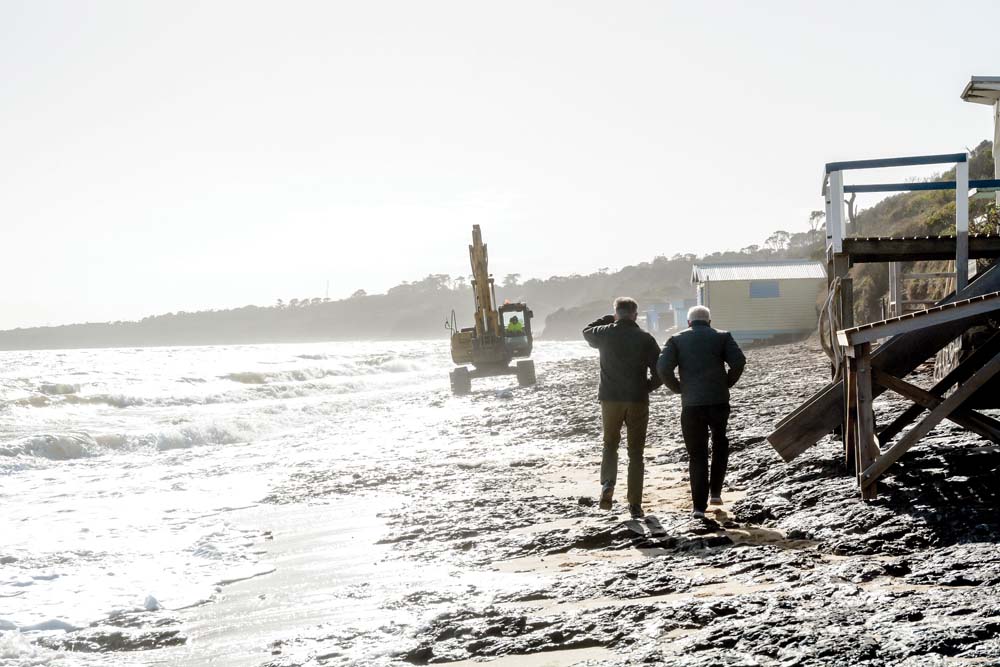
A BREAK in the weather last week allowed the start of “emergency works” to prevent further erosion of cliffs at Mt Martha Beach North.
Heavy earthmoving equipment was driven up the beach from the foreshore car park near the Balcombe Creek Estuary to begin placing large rocks and installing a sand-filled geotextile tube to stop waves further damaging the base of the cliff.
The Department of Environment, Land, Water and Planning (DELWP) estimates the $880,000 works could take six weeks.
Long term options to prevent erosion of the cliffs and danger to the Esplanade will begin in the next month based on the results of the 2017 Water Technology Coastal Processes Study.
The most expensive of the study’s options is costed out at $4 million.
“We want to make sure that any works implemented to restore the beach will be effective, long-lasting and not result in adverse impacts at nearby locations,” DELWP land and built environment program manager, John Downs said.
An earlier attempt to replace sand at Mt Martha North involved trucking in 12,000 cubic metres from Mt Martha South. However, the sand all but disappeared within a few years.
The Mt Martha North Beach Users group says a rock groin built at the northern end of the beach would stop the sand erosion.
“The emergency works will prevent high tides from further eroding the bottom of the cliff, and provide protection to the public from the collapsing cliff,” DELWP land and built environment program manager, John Downs said.
He said the 150 cubic metres of sand needed for the tube would be “relocated” from north of the estuary.
“The works will allow for the public to safely access the beach once the sand begins to return after winter,” Mr Downs said.
Waves have stripped most of the sand from the beach, revealing clay and rock. Most of the remaining sand is underneath the beach boxes, several of which are sagging on their stumps or leaning against neighbouring structures.
“The temporary works provide interim protection as DELWP plans for the long-term safety and stability of the cliff face,” Mr Downs said.
“During the works a Bunurong Land Council heritage adviser will be onsite to ensure the Aboriginal middens either side of the works area are protected at all times.”
Mr Downs said the existing rock revetment at the northern end of the beach would be extended early next year.
“Port Phillip has dynamic beaches with sand moving around seasonally. The foreshore at Mt Martha North, like many parts of the Victorian coast, is a naturally eroding coastline, with net sand loss to southern beaches.”